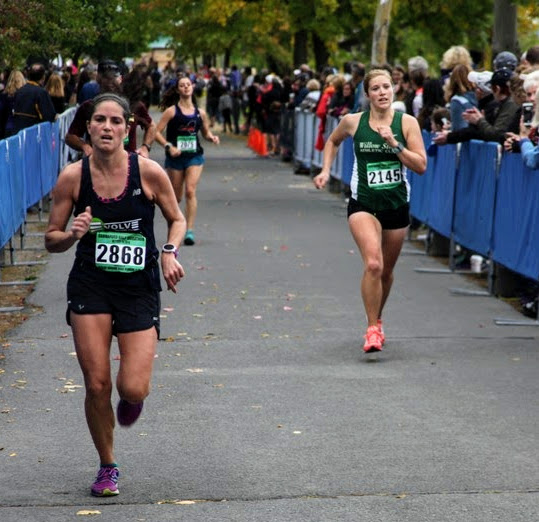#5 Treadmill Workouts
SNAPSHOT
The ease and predictability of the treadmill bring runners to log their miles on a black moving belt.
DIGGING DEEPER
For me the north winter months, thundering lightning storms, a home of sick kids, and dark sunless roads have brought me to hit start on the treadmill. Whatever are your reasons, I have some favorite treadmill workouts for you to attack!
Each of these workouts should begin with a sufficient warm up of about 1-2 miles of running on the treadmill. Following the workout with a 1 mile cool down run and stretching. These workouts are geared more toward the intermediate runner but can be scaled to your current level. Please be cautious and listen to your body, stopping or slowing down as needed.
A Negative Split that
turns you POSITIVE
Start at your warm up pace and increase your speed by 30 seconds per mile every 1/2 mile until you reach 5K or 1 mile race pace.
Example:
1/2 mile at 12 min/mile pace
1/2 mile at 11:30 min/mile pace
1/2 mile at 11 min/mile pace
1/2 mile at 10:30 min/mile pace
1/2 mile at 10 min/mile pace
Best Mile Plus
You most likely have raced yourself on the treadmill wanting to see your best mile time. However this workout takes it another step and asks for you to not only give your best mile time but dig even deeper by returning back to race pace for another lap or quarter mile.
Race one mile on the treadmill at the most even and yet fastest pace that your body can go on the day and hour.
After a 4 minute walk, pump up the speed to your new found best mile race pace and run another quarter mile (.25). Don’t stop there by repeating the quarter mile challenge one more time after a short recovery. Congrats now you have dig deep and repeated your win!
Example:
1 mile as FAST as you can
4 minute walk recovery
1/4 mile at Same Mile Race Pace
2 minute walk/jog recovery
1/4 mile at Same Mile Race Pace
Ladder
Perhaps a full long workout seems daunting and you need to start with just getting your feet moving. Well, try this one next time you are timid on the treadmill.
1 minute at 5K race pace
1 minute at 10K or slower pace
2 minutes at 5K race pace
2 minutes at 10K or slower pace
3 minutes at 5K race pace
2 minutes at 10K or slower pace
2 minute at 5K race pace
1 minute at 10K or slower pace
1 minute at 5K race pace
Know Yourself Test
Alrighty, this workout is for you veteran treadmill runners who are sure they know their different running paces. The must have item for this test is something to cover the part of the screen that shows your pace or speed. I have used clothing items, a thick stack of post it notes, or tape and dark paper.
Either use your usual paces or use a Jack Daniel’s Running Formula chart to figure out your suggested pace for marathon, tempo/threshold, and interval pacing. (When using Daniel’s chart, input your a current race performance not what you want to race in the future. Click Calculate and then the tab Training.) Write those paces down. We will call these your suggested paces.
Without being able to view your pace on the treadmill screen run this workout. In the last 10 seconds of the each pace take the item off the screen and check what pace you were running and record your actual pace found on your treadmill screen.
Your goal is while running to feel the suggested pace without the feedback of the actual pace displayed on the screen. You can change around the speed during the workout to finish each section at what you think is the suggested pace.
Can you match the suggested pace and actual pace?
10 minutes at Feels Like Half-Marathon or Marathon Suggested Pace
1 minute recovery jog
5 minutes at Feels Like Tempo Suggested Pace
1 minute recovery jog
3 minutes at Feels Like Interval Suggested Pace
SOLUTION
Change up your treadmill routine and have a blast running!
This 30 day series is a quest for me as a writer, coach, and runner. I promise to write about running for 30 days in a row. In doing so I intend to gain in knowledge and expression of running and daily life. My hope is that we all grow together.


















